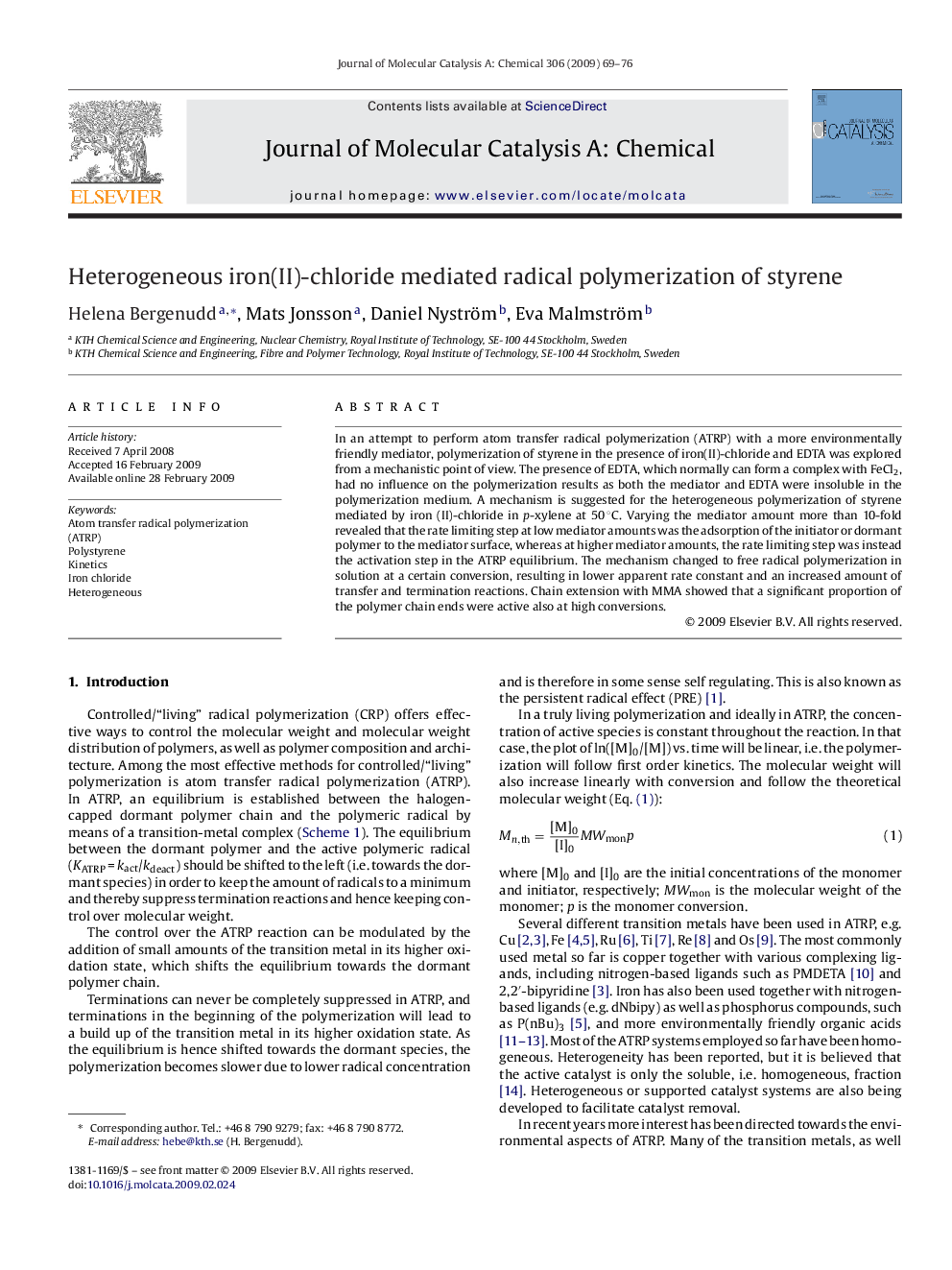| Article ID | Journal | Published Year | Pages | File Type |
|---|---|---|---|---|
| 67007 | Journal of Molecular Catalysis A: Chemical | 2009 | 8 Pages |
In an attempt to perform atom transfer radical polymerization (ATRP) with a more environmentally friendly mediator, polymerization of styrene in the presence of iron(II)-chloride and EDTA was explored from a mechanistic point of view. The presence of EDTA, which normally can form a complex with FeCl2, had no influence on the polymerization results as both the mediator and EDTA were insoluble in the polymerization medium. A mechanism is suggested for the heterogeneous polymerization of styrene mediated by iron (II)-chloride in p-xylene at 50 °C. Varying the mediator amount more than 10-fold revealed that the rate limiting step at low mediator amounts was the adsorption of the initiator or dormant polymer to the mediator surface, whereas at higher mediator amounts, the rate limiting step was instead the activation step in the ATRP equilibrium. The mechanism changed to free radical polymerization in solution at a certain conversion, resulting in lower apparent rate constant and an increased amount of transfer and termination reactions. Chain extension with MMA showed that a significant proportion of the polymer chain ends were active also at high conversions.
Graphical abstractA mechanism is suggested for the heterogeneous polymerization of styrene using iron(II)-chloride as mediator and the ATRP-initiator 1-phenylethylbromide. Though the mechanism gradually changes to free radical polymerization in solution, there is a significant proportion of active chain ends also at high conversions, demonstrated by chain extension with MMA.Figure optionsDownload full-size imageDownload high-quality image (19 K)Download as PowerPoint slide
